A Selection of Edited Work
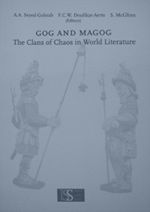
2007: GOG AND MAGOG
The Clans of Chaos in World Literature
Edited by Asghar Seyyed-Ghoreb, Faustina C.W. Doufikar-Aerts + Sen McGlinn. It is a collection of 9 essays looking at the stories of evil clans who threaten a settled people in Western medival, Berber, Persian, Arab and Javanese literature. Paperback. 162 pages.
Published by Rozenberg Publishers, Amsterdam (www.rozenbergps.com) +
Purdue UP Edition, Canada / U.S.A. (www.thepress.purdue.edu)
isbn: 978-1-55753-469-9
Gog and Magog originate in the Bible and Quran, where they feature as savage tribes, threatening a settled people. They are held back by an iron wall, built to protect the civilized lands by a figure who has been identified in the Islamic tradition as Alexander the Great. The story has been elaborated in the traditions of diverse cultures from Indonesia to Europe, in genres ranging from exegesis to apocalypse, folk stories and in folk religion, not excluding the contemporary folk religion of the internet. The figures are constantly reinterpreted, as the figures of the enemies of order change: for the Persians of Ferdowsi’s time they are Turks, for contemporary Israelis they are Arabs, while Arabs may identify any figure of power who presages the end of the world with Gog and Magog.
The articles deal with Gog and Magog in Indonesia, the Persian-speaking and Arabic-speaking worlds, and in the West, in both classical and contemporary cultures. Naturally they are part of the required caste in the Alexander romances, where they contrast with the power and virtue of the hero. In Indonesia, they figure as ‘Juja-Makjuja’ in a Javanese apocalypse, in which the side of evil is associated with the Dutch colonial presence. In medieval Western Europe they are an evil people contained somewhere in the East which will break loose and wreak havoc over the civilised world. In the Byzantine tradition, Gog en Magog are represented as creatures with dogs’ heads and snake tongues, while on the covers of contemporary Arab apocalyptic literature they may be giants or half-humans, and are sometimes associated with flying saucers and the Bermuda Triangle.

2007: The Treasury of Tabriz
The Great Il-Khanid Compendium
Edited by A.A. Seyed-Gohrab & S. McGlinn. Paperback. 280 pages.
Published by Rozenberg Publishers, Amsterdam (www.rozenbergps.com) +
Purdue UP Edition, Canada / U.S.A. (www.thepress.purdue.edu)
isbn: 978-1-55753-468-2
'A Treasury from Tabriz' is a massive manuscript from 14th century Persia. It is almost perfectly preserved, and contains 209 works on a wide range of subjects, in Persian and Arabic. It was bought by Islamic Consultative Assembly in Tehran in 1995, and has been published in facsimile by Tehran University Press.
The city of Tabriz was one of the main cultural centres of the Persian-speaking world in the 14th century. Scholarly and cultural activities included manuscript production, illumination, miniature paintings, architecture, astronomy, philosophy, mysticism, music and literature. The manuscript contains important works selected by an educated gentleman of Tabriz, and copied in his own hand, between 1321 and 1323AD. Together, the texts in the compendium show us the canon of learning in the Islamic world, covering prophetic traditions, ethics, mysticism, jurisprudence, theology, exegesis, history, grammar, literature and literary criticism, philosophy, astronomy and astrology, geomancy, mineralogy, mathematics, medicine, music, cosmography and geography. The essays collected in this volume introduce diverse aspects of this compendium for the first time, giving us a window into this world, and in some cases the best available texts of important works of Islamic culture and learning.
This collection of essays contains fourteen articles, each dealing with one aspect of this manuscript, from palaeography and codicology to philosophy, Islamic mysticism, history, literary works, astronomy and wisdom literature. Each article revolves around a specific topic, explaining its importance in the cultural and literary milieu of the fourteenth century Islamic world.
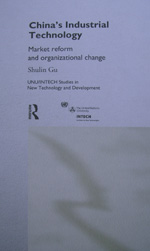
1999: China's Industrial Technology
Market reform and organizational change
by Shulin Gu.
Text Editor: Sen McGlinn.
Produced by UNU/UNTECH (United Nations University + UN Institute for New Technologies) Studies in New Technology and Development, Maastricht.
First published by Routledge, London + UNU Press.
Hardback, 410 pages.
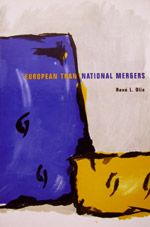
1996: European Transnational Mergers
Edited by Rene L. Olie
Text Editor: Sen McGlinn.
PhD thesis, Department of Economics and Business Administration, University of Limburg, Maastricht
Paperback, 381 pages.
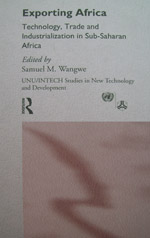
1995: Exporting Africa
Technology, Trade and Industrialization
in Sub-Saharan Africa
Written and edited by Samuel M. Wangwe
Text Editor: Sen McGlinn.
with 6 country studies by other authors, commissioned by UNU/UNTECH (United Nations University + UN Institute for New Technologies) Studies in New Technology and Development, Maastricht.
First published by Routledge, London + UNU Press.
Hardback, 436 pages.
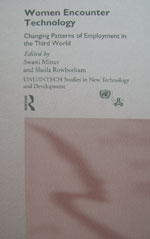
1995: Women Encounter Technology
Changing Patterns of Employment in the Third World
Edited by Swasti Mitter + Sheila Rowbotham.
Text Editor: Sen McGlinn.
15 essays by 15 authors commissioned by UNU/UNTECH (United Nations University + UN Institute for New Technologies) Studies in New Technology and Development, Maastricht.
First published by Routledge, London + UNU Press.
Hardback, 356 pages.
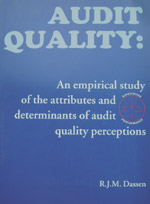
1995: Audit Quality:
An empirical study of the attributes and determinants of audit quality perceptions
PhD thesis by R.J.M. Dassen, published by the Faculty of Economics and Business Administration University of Limburg, Maastricht, The Netherlands.
Text editor: Sen McGlinn.
Paperback. 216 pages.
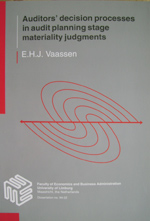
1994: Auditors' decision processes in
audit planning stage materiality judgements
by E.H.J. Vaassen.
Text editor: Sen McGlinn.
PhD thesis published by the Faculty of Economics and Business Administration University of Limburg, Maastricht, The Netherlands.
Paperback. 227 pages.
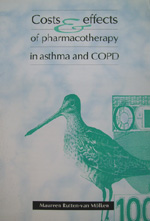
1994: Costs and Effects of pharmacotheraphy
in asthma and COPD
(chronic obstructive pulmonary disease)
by Maureen Rutten-van Molken
Text editor: Sen McGlinn.
PhD thesis published by the Faculty of Health Science, University of Limburg, Maastricht, The Netherlands.
Paperback. 213 pages.
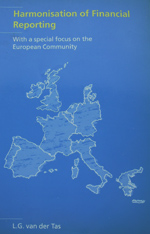
1991: The Harmonisation of Financial Reporting
With a special focus on the European Community
by Leo G. van der Tas
Text editor: Academic Text Services / Sen McGlinn.
PhD thesis, Department of Financial and Management Accounting of the Erasmus University, Rotterdam.
Paperback. 313 pages.
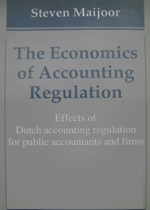
1991: The Economics of Accounting Regulation
Effects of Dutch accounting regulation for public accountants and firms
by Steven Maijoor
Text editor: Sen McGlinn.
PhD thesis in the Department of Economics, University of Limburg, Maastricht.
Paperback. 213 pages.
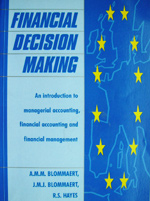
1991: Financial Decision Making
An introduction to managerial accounting, finanicial accounting and financial management
by A.M.M. Blommaert, J.M.J. Blommaert + R.S. Hayes.
Text editor: Sen McGlinn.
Published by Prentice Hall and used as a textbook in various university courses.
Paperback. 335 pages.